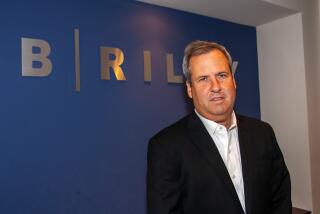AIG may get $30 billion in federal aid
- Share via
American International Group Inc. will gain access to $30 billion more in taxpayer money as part of another restructuring of its federal bailout, sources involved in the negotiations said Sunday.
It marks the third time the company has sought additional assistance from the government since its massive rescue in September.
The reworked plan is aimed in part at helping the insurance giant avert a potential disaster as it announces the biggest corporate loss in history this morning -- more than $60 billion for the fourth quarter of 2008, according to sources.
Credit-rating companies probably would have downgraded AIG in the face of such staggering losses, burying the company in a wave of new debt and possibly sending it into bankruptcy.
But the commitment of new funds from the U.S. Treasury’s Troubled Asset Relief Program is meant to assure rating firms, which were consulted on the deal, that AIG could make good on its public and private debts.
“It buys time,” said one source involved in the discussions, adding that AIG isn’t expected to access the money immediately.
The additional federal money is simply one part of the restructuring approved Sunday by AIG’s board of directors.
As part of an effort to pay back its outstanding Federal Reserve loan, AIG would give the government equity stakes in two of the company’s crown jewels, American International Assurance Co. in Asia and American Life Insurance Co., which operates in more than 50 countries.
Each subsidiary would be placed in a separate trust to remove them from AIG’s books, and the government would have direct ownership. AIG would continue to operate the companies, however, and eventually could sell them or take them public.
The revamped deal allows AIG to free itself from the 10% dividend it previously had to pay the government on its preferred shares, a move certain to save billions annually.
The government also has agreed to buy a sizable chunk of, or securitize, AIG’s domestic life insurance business for $7 billion to $10 billion, sources said. The government could then sell that business or simply take in the steady income that business provides.
The reworked bailout package acknowledges that AIG’s strategy of selling off two-thirds of its assets to pay back the government within two years was not working. In recent months, the market for those assets continued to plummet as the economy worsened, and already-hesitant buyers were facing their own credit problems.
“This expands the number of options,” said one source involved in the restructuring. “Alternatives are a good thing.”
The new deal, however, will leave the federal government more deeply intertwined than ever with AIG, all but assuring that taxpayers will remain entangled with the company for years to come.
The government largely nationalized the company in September. It had taken an 80% ownership stake after the Federal Reserve extended an $85-billion emergency loan. At the time, the collapse of investment bank Lehman Bros. had left markets reeling, and AIG was teetering on the edge of bankruptcy in large part because of a troubled portfolio of complex financial derivatives written by a subsidiary.
Officials at the Treasury Department and the Federal Reserve feared that AIG, once one of the world’s most successful conglomerates, had grown so intertwined with the global economy that its failure could have disastrous consequences.
Two months later, with the company still reeling, the government changed and expanded the terms of the bailout. The government announced in November that it would buy $40 billion of AIG’s preferred stock, with the money coming from TARP funds.
It spent more than $50 billion more to buy up troubled assets -- mostly toxic mortgage-related investments the company either held or insured for other firms -- that were wreaking havoc on the company’s books.
It also eased the terms of the initial loan to $60 billion, dropped its interest rate to as low as 5% from 14% and extended the payback time to five years rather than two.
And yet, none of that proved quite enough.
More to Read
Inside the business of entertainment
The Wide Shot brings you news, analysis and insights on everything from streaming wars to production — and what it all means for the future.
You may occasionally receive promotional content from the Los Angeles Times.










